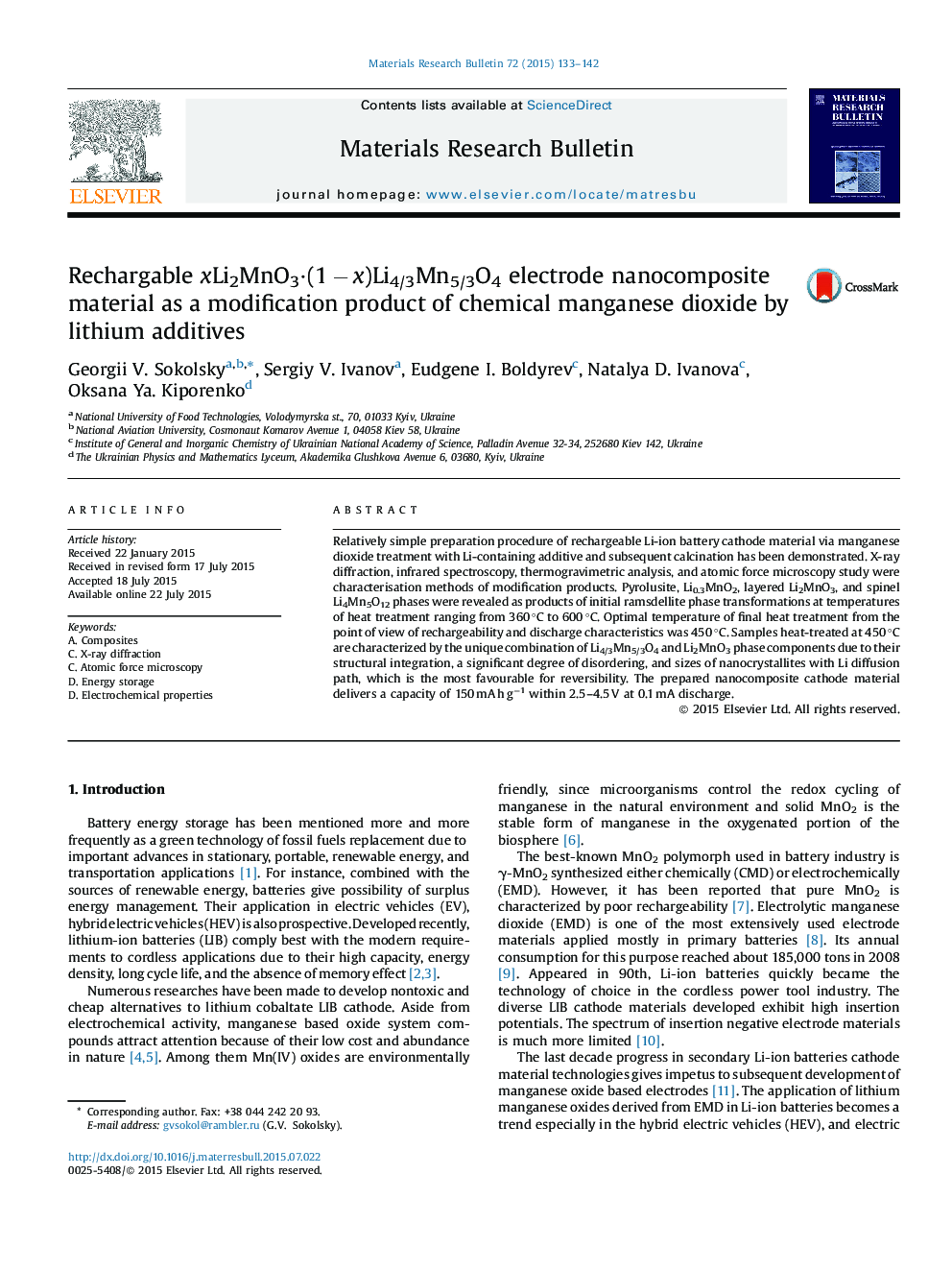| Article ID | Journal | Published Year | Pages | File Type |
|---|---|---|---|---|
| 1487523 | Materials Research Bulletin | 2015 | 10 Pages |
•Li-ion battery cathode preparation procedure included MnO2 modification by Li-salts with subsequent heat treatment.•Li4Mn5O12, Li2MnO3, and Li-rich phases form active nanocomposite cathode.•Heat treatment mode is of crucial importance for rechargeability.•Cathode material capacity is 150 mA h g−1 within 2.5–4.5 V.
Relatively simple preparation procedure of rechargeable Li-ion battery cathode material via manganese dioxide treatment with Li-containing additive and subsequent calcination has been demonstrated. X-ray diffraction, infrared spectroscopy, thermogravimetric analysis, and atomic force microscopy study were characterisation methods of modification products. Pyrolusite, Li0.3MnO2, layered Li2MnO3, and spinel Li4Mn5O12 phases were revealed as products of initial ramsdellite phase transformations at temperatures of heat treatment ranging from 360 °C to 600 °C. Optimal temperature of final heat treatment from the point of view of rechargeability and discharge characteristics was 450 °C. Samples heat-treated at 450 °C are characterized by the unique combination of Li4/3Mn5/3O4 and Li2MnO3 phase components due to their structural integration, a significant degree of disordering, and sizes of nanocrystallites with Li diffusion path, which is the most favourable for reversibility. The prepared nanocomposite cathode material delivers a capacity of 150 mA h g−1 within 2.5–4.5 V at 0.1 mA discharge.
Graphical abstractFigure optionsDownload full-size imageDownload as PowerPoint slide
